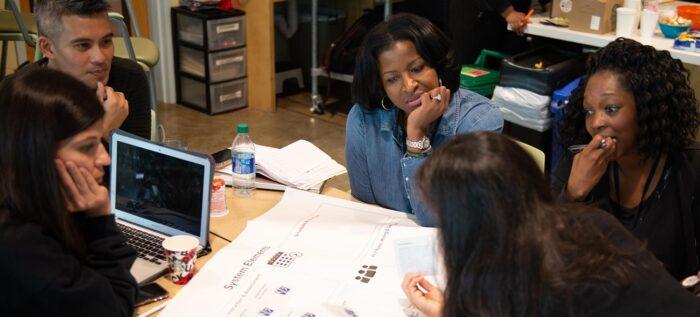In an age where technology transcends the boundaries of imagination, blockchain development emerges as both a revolutionary concept and a pivotal force shaping our digital landscape. Once confined to the realm of cryptocurrency, the art of blockchain has evolved into a sophisticated craft, unlocking new opportunities across industries as varied as finance, healthcare, and supply chain management. This article delves into the intricate layers of blockchain development, exploring its fundamental principles, innovative applications, and the essential skills required to thrive in this ever-evolving field. Join us as we unravel the complexities of this transformative technology and discover how it holds the key to a decentralized future, empowering individuals and organizations alike to forge transparent, secure, and efficient systems. Welcome to a journey of exploration into the world of blockchain, where every line of code is a step towards unlocking limitless potential.
Exploring the Foundations of Blockchain Technology
At the heart of blockchain technology lies a revolutionary approach to data management, characterized by decentralization and transparency. Traditional databases typically operate on centralized servers, which raises concerns about security and trust. In contrast, blockchain employs a peer-to-peer network where each participant holds an identical copy of the database, thus mitigating the risk of single points of failure. The fundamental concepts that underpin this technology include:
- Decentralization: Eliminates the need for intermediaries, empowering users and enhancing privacy.
- Immutability: Once data is added to the blockchain, it cannot be altered or deleted, ensuring data integrity.
- Consensus Mechanisms: Protocols like Proof of Work (PoW) and Proof of Stake (PoS) validate transactions, maintaining network security.
The structure of a blockchain is elegantly simple yet powerful, comprised of blocks linked in chronological order. Each block contains a set of transactions, a timestamp, and a hash pointer to the preceding block, forming a secure chain. To illustrate the components of a block, consider the following table:
| Block Component | Description |
|---|---|
| Transactions | Records of all assets and information exchanged within the block. |
| Timestamp | The exact time the block was created, ensuring chronological order. |
| Previous Block Hash | A unique identifier that links the current block to the one before it, ensuring continuity. |

Designing Scalable Solutions for Real-World Applications
In the pursuit of building robust blockchain solutions, scalability is a critical component that cannot be overlooked. As blockchain technology continues to gain traction across various industries, developers must focus on creating architectures that can handle increased demand without compromising performance or security. To achieve this, it is essential to implement strategies such as layered protocols, sharding, and sidechains, each designed to optimize network efficiency while facilitating the seamless integration of various applications.
Successful scalable solutions can often be illustrated through comparative metrics, showcasing how different architectures impact transaction throughput and latency. Below is a concise overview of three common scalability strategies:
| Strategy | Description | Key Benefit |
|---|---|---|
| Layered Protocols | Utilizes additional layers to streamline operations. | Enhanced flexibility and processing speed. |
| Sharding | Distributes data across multiple servers. | Improved resource management and scalability. |
| Sidechains | Enables transactions outside the main blockchain. | Reduces congestion on the main network. |

Navigating Regulatory Landscapes in Blockchain Development
In the rapidly evolving landscape of blockchain technology, understanding the regulatory environment is crucial for developers looking to innovate responsibly. Each jurisdiction presents its own set of rules and frameworks that govern blockchain applications, from data privacy laws to financial regulations. To navigate these complexities, developers must engage in diligent research and maintain an adaptive mindset, allowing them to implement solutions that are not only functional but also compliant. Key areas of focus include:
- Legal Frameworks: Familiarize yourself with national and international regulations that affect blockchain operations.
- Compliance: Adopt best practices for KYC and AML to stay ahead of regulatory changes.
- Risk Management: Develop strategies to mitigate risks associated with non-compliance.
Moreover, collaboration with legal experts can provide invaluable guidance as developers craft blockchain solutions that respect both innovation and legislative boundaries. Regular updates from credible sources can help developers remain informed about shifts in the regulatory landscape. Consider utilizing a structured approach to track the compliance requirements across different regions:
| Region | Regulatory Authority | Key Concerns |
|---|---|---|
| United States | SEC | Securities classification, ICO regulations |
| European Union | ESMA | Data protection (GDPR), MiFID II compliance |
| Asia | Variations by country | Regulatory clarity, differing compliance standards |

Cultivating a Community-Centric Approach to Innovation
In the ever-evolving landscape of blockchain development, fostering a community-centric mindset is crucial for driving innovation. This approach acknowledges that groundbreaking solutions arise not just from the technology itself, but from the rich tapestry of perspectives within a diverse community. By engaging stakeholders—from developers and entrepreneurs to end-users and advocates—projects can benefit from a wealth of ideas and insights. When developers actively listen to community feedback, the outcome is a more robust and applicable product tailored to real-world needs.
Building a vibrant, cooperative ecosystem encourages collaboration and shared knowledge. Initiatives such as hackathons, workshops, and online forums can be pivotal in drawing in talents and generating excitement around blockchain projects. The resulting relationships can lead to a variety of innovative contributions, such as:
- Open-source collaborations that democratize access to technology.
- Shared resources for learning and development opportunities.
- Feedback loops that continuously improve the product lifecycle.
Ultimately, prioritizing community interaction cultivates a spirit of joint ownership and responsibility, making the pathway for blockchain innovation more inclusive and effective.
The Conclusion
As we stand on the precipice of a new technological era, the art of blockchain development invites not only innovation but also a reimagining of what is possible in our interconnected world. The insights gleaned from this architectural marvel of decentralized systems could very well redefine the landscapes of finance, governance, and beyond. Embracing the complexities of blockchain is not merely a technical endeavor; it is a creative pursuit that challenges developers to craft solutions that are not only efficient but also equitable.
In unlocking the future, we recognize that the potential of blockchain transcends the confines of code. It serves as a collaborative canvas where developers, businesses, and communities alike can paint their visions of progress. As we move forward, staying informed and engaged with the evolving narratives of blockchain technology will be key. The journey has just begun, and it is a path filled with possibilities waiting to be explored. In this rapidly changing digital age, may we all become architects of a future that is transparent, secure, and undeniably transformative. The canvas is ours to shape—let the art of blockchain development flourish.



